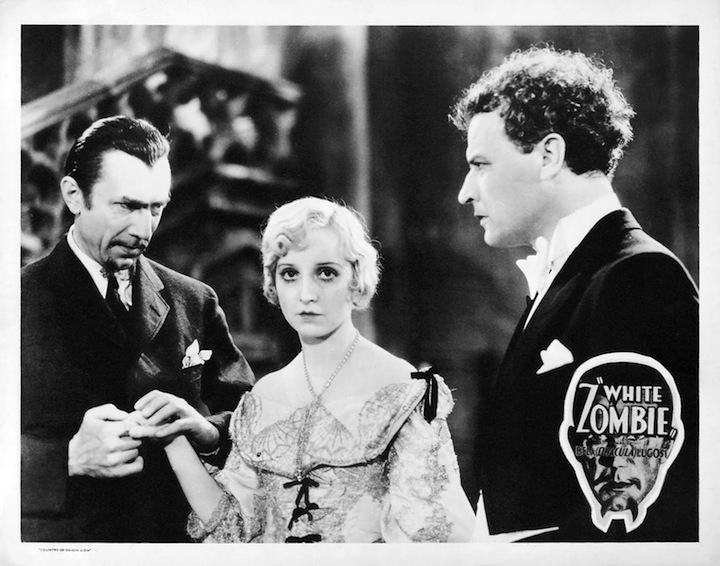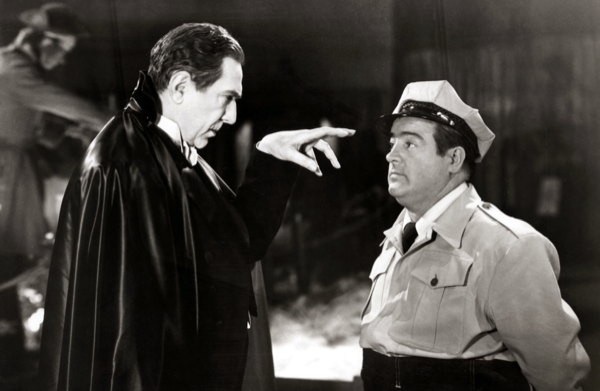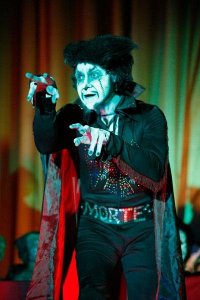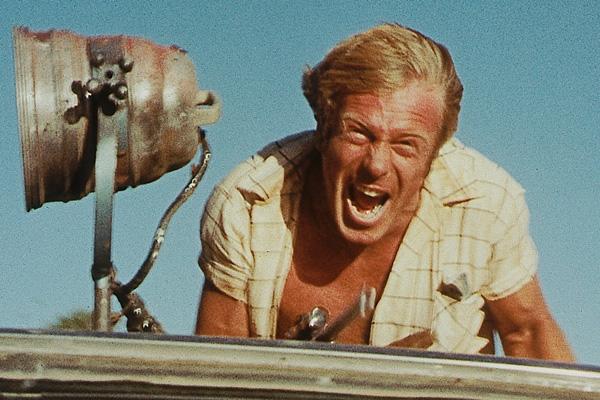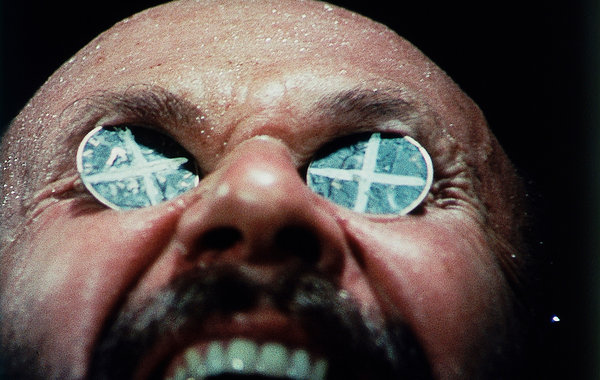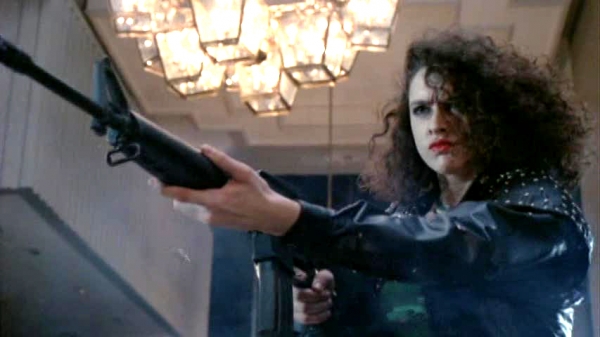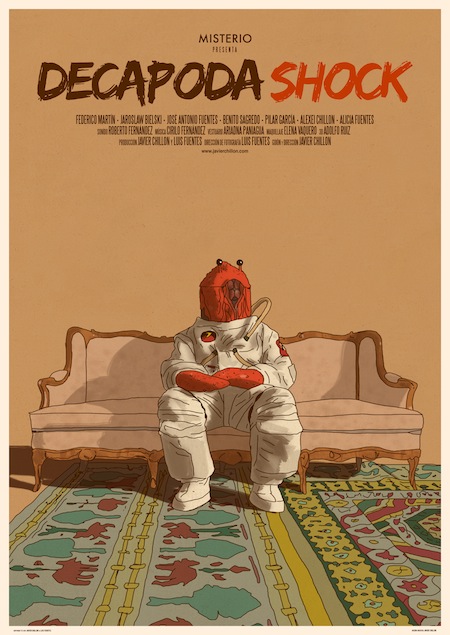 THE PIT AND THE PENDULUM (1961); Dir. Roger Corman; Starring Vincent Price, Barbara Steele and John Kerr; Premiere Friday, Feb. 1 @ 8:00 p.m. with giveaways; then nightly at 8 p.m. Feb. 2- 7; Plaza Theatre (visit website for times and ticket prices); Trailer here.
THE PIT AND THE PENDULUM (1961); Dir. Roger Corman; Starring Vincent Price, Barbara Steele and John Kerr; Premiere Friday, Feb. 1 @ 8:00 p.m. with giveaways; then nightly at 8 p.m. Feb. 2- 7; Plaza Theatre (visit website for times and ticket prices); Trailer here.
By Aleck Bennett
Contributing Writer
Finally, after years of waiting, it is now possible to see PIT AND THE PENDULUM on the big screen once again in a newly-restored, high-definition digital presentation. For far too long, the movie has been hard to see in optimal condition (even the most recent MGM Midnite Movies DVD of the title isn’t anamorphically enhanced for widescreen presentation). This is something that’s always struck me as odd since it’s one of the best-remembered films of American International Pictures‘ Edgar Allan Poe cycle, was a huge box-office smash at the time and contains some of the most defining scenes in post-1960 horror. Be that as it may, as far as securing prints go, it has been one of the more obscure films of Roger Corman. Thankfully, that’s changing now, and THE PIT AND THE PENDULUM can be seen in all of its glory and grandeur at Atlanta’s historic Plaza Theatre from Friday, February 1 through Thursday, February 7. Friday night’s showing will feature a special giveaway of two free tickets to all nine days of the Atlanta Film Festival: a $600 value! It promises to be an event big enough to befit the legendary teaming of Corman, Price and Poe.
But for a certain set of the man’s fans, the first things that come to mind are two names: Edgar Allan Poe and Vincent Price.
 In 1960, American International Pictures was seeing the market for their low-budget, black-and-white output shrink. Roger Corman had been their most prolific filmmaker, churning out low-budget schlock in 10 days or less (mind you, it’s some great schlock, and never without a sense of wit and intelligence behind it all), and convinced studio heads Samuel Z. Arkoff and James H. Nicholson to take a risk on shooting a full-color widescreen film with a larger budget (a full $300,000!) and a longer production schedule (a full 15 days!). The success of this film, HOUSE OF USHER, pushed AIP to demand more of the same: another Poe adaptation, made by the same team and starring the same lead, Vincent Price.
In 1960, American International Pictures was seeing the market for their low-budget, black-and-white output shrink. Roger Corman had been their most prolific filmmaker, churning out low-budget schlock in 10 days or less (mind you, it’s some great schlock, and never without a sense of wit and intelligence behind it all), and convinced studio heads Samuel Z. Arkoff and James H. Nicholson to take a risk on shooting a full-color widescreen film with a larger budget (a full $300,000!) and a longer production schedule (a full 15 days!). The success of this film, HOUSE OF USHER, pushed AIP to demand more of the same: another Poe adaptation, made by the same team and starring the same lead, Vincent Price.
Corman complied and assembled his USHER team: cinematographer (Floyd Crosby), set designer (Daniel Haller), score composer (Les Baxter) and screenwriter, the now-legendary horror author Richard Matheson. Matheson had seen a good deal of success as a writer in the decade previous to his teaming with Corman. He had adapted his novel THE SHRINKING MAN into the smash sci-fi/horror film THE INCREDIBLE SHRINKING MAN, and his novels and short stories were in high demand. He had just been added to the stable of writers employed by THE TWILIGHT ZONE, and was also selling scripts to western- and war-themed TV shows. In short, Corman (in a typical move for him) had spotted an up-and-coming talent that he could grab for relatively cheap: someone who might be willing to trade some of the money he could get from a higher-paying gig for the relative liberty of a Corman screenwriting job. The pairing worked so well on USHER that Matheson returned for this, and several of the films following this in Corman’s Poe series.
 The film is set in 1th Century Spain, and follows Francis Barnard (John Kerr) as he visits the castle of his brother-in-law Nicholas (Vincent Price) to investigate the death of his sister Catherine (Barbara Steele). Nicholas recounts that Catherine had been driven mad by the castle’s history and atmosphere, had committed suicide and now walks the castle halls as a ghost. When it is uncovered that Catherine had been interred alive, Nicholas is sent into paroxysms of fear and plunged into madness as he has visions of the traumatic events of his childhood. It all culminates in Nicholas’ break with sanity as he tortures his household in the dungeon beneath the castle’s floors.
The film is set in 1th Century Spain, and follows Francis Barnard (John Kerr) as he visits the castle of his brother-in-law Nicholas (Vincent Price) to investigate the death of his sister Catherine (Barbara Steele). Nicholas recounts that Catherine had been driven mad by the castle’s history and atmosphere, had committed suicide and now walks the castle halls as a ghost. When it is uncovered that Catherine had been interred alive, Nicholas is sent into paroxysms of fear and plunged into madness as he has visions of the traumatic events of his childhood. It all culminates in Nicholas’ break with sanity as he tortures his household in the dungeon beneath the castle’s floors.
Because of the slightness of narrative material in Poe’s short story, which is set nearly entirely within a prison cell over the course of a few nights, Matheson was encouraged to devise a way to shoehorn Poe’s tale into just the film’s climactic scene. In doing so, he created a psychologically rich screenplay centered on the main character’s neuroses, all of which seem to stem from a terrifying event witnessed in his youth. This psychological approach to gothic horror would prove to be incredibly influential in the years to come, as reverberations of its themes (along with their visual depiction by the team of Corman, Crosby and Haller) would be seen in many of the great Italian gothic horrors of the 1960s and ’70s, as Tim Lucas uncovered in his 1997 interview with screenwriter Ernesto Gastaldi in VIDEO WATCHDOG #39. Gastaldi admitted that the film had inspired his screenplays for Mario Bava’s THE WHIP AND THE BODY and Antonio Margheriti’s THE LONG HAIR OF DEATH: “Yes, of course! THE PIT AND THE PENDULUM had a big influence on Italian horror films. Everybody borrowed from it.”
 Vincent Price, too, returned to the AIP fold. Price had starred to great effect in HOUSE OF USHER, and brought equal parts menace, dignity and emotional complexity to what could have been a flatly-played character in lesser hands. In THE PIT AND THE PENDULUM, he would be given even more to chew on as Nicholas Medina (and, in flashback, his crazed Inquisitor father, Sebastian Medina). Some have argued that perhaps Price sank his teeth a bit too deeply into the role, which required him to shift from a refined-but-fragile gentleman persona to that of a raving madman at a second’s notice. And it’s true that Price seems to be having the time of his life, relishing every utterance and mannerism, and basically being Vincent Price at his Priciest. But in a film that demands a tone that almost tips into the surreal, his nearly over-the-top performance works perfectly as a piece with every other element in the production.
Vincent Price, too, returned to the AIP fold. Price had starred to great effect in HOUSE OF USHER, and brought equal parts menace, dignity and emotional complexity to what could have been a flatly-played character in lesser hands. In THE PIT AND THE PENDULUM, he would be given even more to chew on as Nicholas Medina (and, in flashback, his crazed Inquisitor father, Sebastian Medina). Some have argued that perhaps Price sank his teeth a bit too deeply into the role, which required him to shift from a refined-but-fragile gentleman persona to that of a raving madman at a second’s notice. And it’s true that Price seems to be having the time of his life, relishing every utterance and mannerism, and basically being Vincent Price at his Priciest. But in a film that demands a tone that almost tips into the surreal, his nearly over-the-top performance works perfectly as a piece with every other element in the production.
Barbara Steele, fresh from starring in Mario Bava’s international gothic horror success, BLACK SUNDAY, is also incredibly memorable as Catherine, delivering an impressively expressive performance. However, it’s hard to objectively discuss her work in this film beyond the physical aspect of it: thinking that her natural British accent didn’t mesh with the other actors’ performances, AIP had her part dubbed in post-production by another actress.
Visually, Corman and his team work wonders with what little budget and time they were given, using impressive sets borrowed from other studios, violently active camera work and dream/fantasy/flashback sequences warped and twisted optically and displayed using a blue and red color palette. Corman’s direction is—as usual—tight and effective, providing impressive and perfectly-timed jolts while steadily building an atmosphere of oppression and madness. For pure horror, it is the highlight of the entire Corman/Poe series, and artistically tied only with THE MASQUE OF THE RED DEATH (MASQUE may be more thematically and symbolically rich and more daring in its approach, but PIT beats it on pure fright value).
Aleck Bennett is a writer, blogger, pug warden, pop culture enthusiast, raconteur and bon vivant from the greater Atlanta area. Visit his blog at doctorsardonicus.wordpress.



